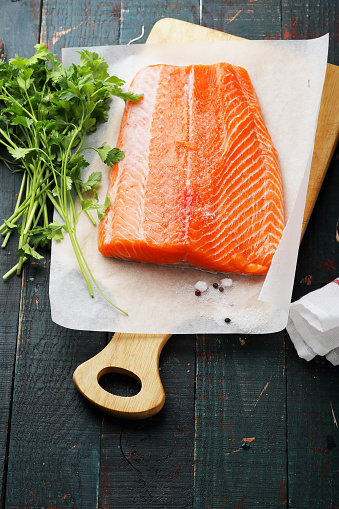Taken from Univ. of Maryland Medical Center reference guide:
Overview
 Omega-3 fatty acids are considered essential fatty acids. They are necessary for human health, but the body can't make them. You have to get them through food. Omega-3 fatty acids are found in fish, such as salmon, tuna, and halibut, other seafoods including algae and krill, some plants, and nut oils. Also known as polyunsaturated fatty acids (PUFAs), omega-3 fatty acids play a crucial role in brain function, as well as normal growth and development. They have also become popular because they may reduce the risk of heart disease. The American Heart Association (AHA) recommends eating fish (particularly fatty fish such as mackerel, lake trout, herring, sardines, albacore tuna, and salmon) at least 2 times a week.
Omega-3 fatty acids are considered essential fatty acids. They are necessary for human health, but the body can't make them. You have to get them through food. Omega-3 fatty acids are found in fish, such as salmon, tuna, and halibut, other seafoods including algae and krill, some plants, and nut oils. Also known as polyunsaturated fatty acids (PUFAs), omega-3 fatty acids play a crucial role in brain function, as well as normal growth and development. They have also become popular because they may reduce the risk of heart disease. The American Heart Association (AHA) recommends eating fish (particularly fatty fish such as mackerel, lake trout, herring, sardines, albacore tuna, and salmon) at least 2 times a week.
Research shows that omega-3 fatty acids reduce inflammation and may help lower risk of chronic diseases such as heart disease, cancer, and arthritis. Omega-3 fatty acids are highly concentrated in the brain and appear to be important for cognitive (brain memory and performance) and behavioral function. In fact, infants who do not get enough omega-3 fatty acids from their mothers during pregnancy are at risk for developing vision and nerve problems. Symptoms of omega-3 fatty acid deficiency include fatigue, poor memory, dry skin, heart problems, mood swings or depression, and poor circulation.
It is important to have the proper ratio of omega-3 and omega-6 (another essential fatty acid) in the diet. Omega-3 fatty acids help reduce inflammation, and most omega-6 fatty acids tend to promote inflammation. The typical American diet contains 14 to 25 times more omega-6 fatty acids than omega-3 fatty acids, which many nutritionally-oriented physicians consider to be way too high on the omega-6 side. Indeed, studies suggest that higher dietary omega-6 to omega-3 ratios appear to be associated with worsening inflammation over time and a higher risk of death among hemodialysis patients.
The Mediterranean diet, on the other hand, has a healthier balance between omega-3 and omega-6 fatty acids. Many studies have shown that people who follow this diet are less likely to develop heart disease. The Mediterranean diet emphasizes foods that are rich in omega-3 fatty acids, including whole grains, fresh fruits and vegetables, fish, olive oil, garlic, and moderate wine consumption.